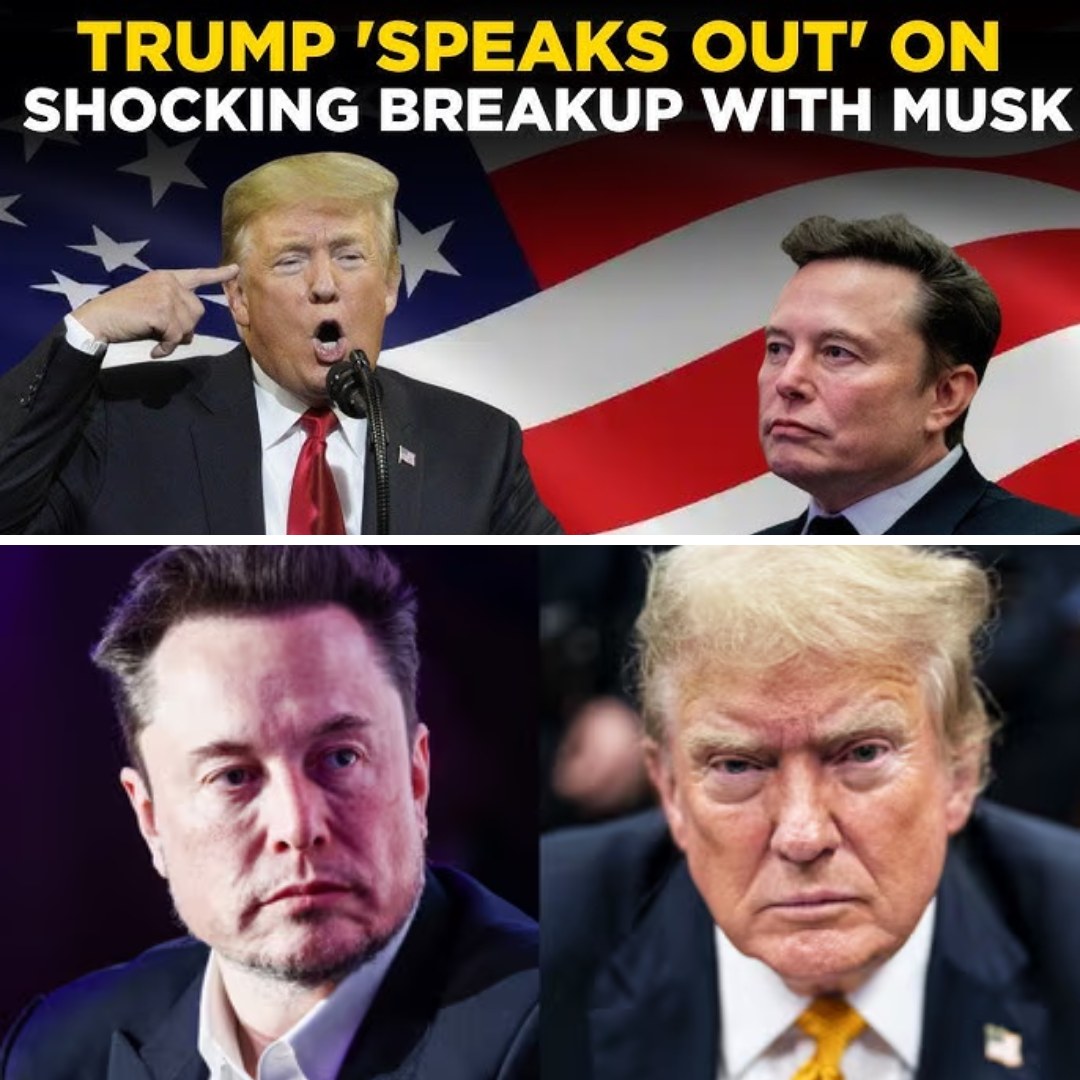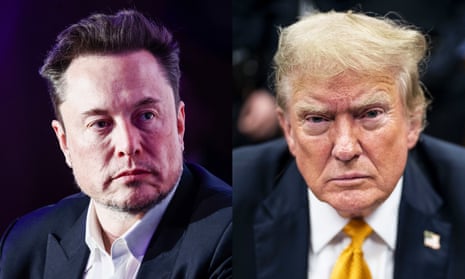 The alliance between President Donald Trump and billionaire Elon Musk, once heralded as a formidable partnership between two of the world’s most powerful men, has officially come to an end. On May 29, 2025, Musk announced his departure from the Trump administration, capping a tumultuous tenure as a special advisor and head of the Department of Government Efficiency (DOGE). Their breakup, which had been brewing for months, culminated in a public clash over Trump’s “One Big Beautiful Bill Act,” a domestic policy bill that Musk criticized for increasing the federal deficit. As of June 4, 2025, the fallout continues to reverberate through political and business circles, raising questions about the sustainability of such high-profile alliances, the impact of Musk’s government stint, and what this means for Trump’s second term. This article explores the rise and fall of the Trump-Musk relationship, the key factors that led to their split, and the broader implications for American governance.
The alliance between President Donald Trump and billionaire Elon Musk, once heralded as a formidable partnership between two of the world’s most powerful men, has officially come to an end. On May 29, 2025, Musk announced his departure from the Trump administration, capping a tumultuous tenure as a special advisor and head of the Department of Government Efficiency (DOGE). Their breakup, which had been brewing for months, culminated in a public clash over Trump’s “One Big Beautiful Bill Act,” a domestic policy bill that Musk criticized for increasing the federal deficit. As of June 4, 2025, the fallout continues to reverberate through political and business circles, raising questions about the sustainability of such high-profile alliances, the impact of Musk’s government stint, and what this means for Trump’s second term. This article explores the rise and fall of the Trump-Musk relationship, the key factors that led to their split, and the broader implications for American governance.
The Rise of a Power Duo
The Trump-Musk partnership began as an unlikely but mutually beneficial alliance during the 2024 presidential campaign. Musk, the world’s richest man and CEO of Tesla, SpaceX, and xAI, initially had little in common with Trump, a 78-year-old real estate mogul and former reality TV star. Musk, a 53-year-old South African-born tech innovator, had publicly criticized Trump in the past, calling him unfit to reflect well on the United States in 2016, while Trump dismissed Musk as a “bullshit artist” in 2022 for supporting his opponents. However, their shared penchant for disruption, rule-breaking, and challenging the establishment brought them together in a powerful convergence of political and financial might.
Musk threw his weight behind Trump’s campaign against Kamala Harris, becoming his top donor with contributions totaling nearly $300 million. He spent election night at Trump’s Mar-A-Lago estate in Palm Beach, Florida, and used his social media platform, X, to amplify pro-Trump propaganda, significantly influencing the political discourse. In return, Trump appointed Musk to lead DOGE, a taskforce aimed at restructuring federal agencies, cutting budgets, and rooting out waste and corruption. Dubbed “first buddy,” Musk quickly became a hyper-visible figure in Trump’s second term, bringing a Silicon Valley “move fast and break things” approach to Washington. Their relationship was initially symbiotic: Trump gained a tech-savvy ally with deep pockets and a platform to push his agenda, while Musk secured unprecedented influence over federal policy, potentially benefiting his business empire.
The duo’s early days were marked by public displays of camaraderie. They attended campaign events together, watched SpaceX’s Starship launch in Texas, and even sat for a joint interview with Fox News’ Sean Hannity in February 2025. Musk declared his admiration for Trump on X, writing, “I love @realDonaldTrump as much as a straight man can love another man.” Trump, in turn, praised Musk’s genius, seeing him as a key to shaking up the federal bureaucracy. However, beneath the surface, tensions were already simmering, driven by their clashing egos, differing ideologies, and competing interests.
Cracks in the Facade
Observers had long predicted that the Trump-Musk alliance would not last, given the personalities involved. Both men are known for their massive egos, intolerance for disloyalty, and desire to dominate the spotlight. Trump has a history of discarding allies who threaten to overshadow him, as seen with figures like Paul Manafort and Roger Stone, while Musk has never been one to play second fiddle. As early as January 2025, analysts pointed to potential friction points, including Trump’s demand for absolute loyalty and Musk’s refusal to fully submit to that expectation.
One of the first signs of trouble came with Musk’s role in DOGE. While the taskforce was initially celebrated by Trump for identifying waste, fraud, and abuse, its aggressive cuts—estimated at $175 billion by DOGE, though disputed by critics—drew backlash. Musk’s tactics, which included slashing thousands of jobs and decimating agencies like the United States Agency for International Development, led to lawsuits and protests. Some estimates suggest that the cuts to foreign aid alone may have contributed to hundreds of thousands of deaths globally, a devastating consequence that tarnished Musk’s public image. By February 2025, polls showed Musk’s favorability rating plummeting to a net -13 points, down from +29 before the election, with many Americans souring on his influence in the administration.
Policy disagreements further strained the relationship. Musk’s business interests often clashed with Trump’s populist agenda. Trump’s hawkish stance on trade with China, particularly his tariffs announced in April 2025, threatened Tesla’s operations, as the company relies heavily on its Shanghai factory. Musk publicly advocated for free trade and lower tariffs, positioning himself against Trump’s protectionist policies. Additionally, Trump’s $500 billion AI initiative, Stargate, which partnered with OpenAI—led by Musk’s rival Sam Altman—infuriated Musk, who criticized the deal as underfunded and mocked Altman on X. These public jabs were seen as a declaration of independence, a move that Trump, who demands unwavering loyalty, interpreted as betrayal.
The breaking point came with Trump’s “One Big Beautiful Bill Act,” a domestic policy bill that passed the House in April 2025. The legislation, which included tax cuts, border wall funding, and the elimination of clean energy incentives, was projected by the Congressional Budget Office to add $2.3 trillion to the federal deficit over a decade. Musk, whose DOGE initiative aimed to reduce government spending, was vocal in his opposition. In a May 2025 interview with CBS’ Sunday Morning, he expressed disappointment, stating that the bill “increases the budget deficit, not just decreases it, and undermines the work that the DOGE team is doing.” He even mocked the bill’s title, saying, “I think a bill can be big or it can be beautiful, I don’t know if it can be both.” This public criticism was the final straw, as it directly challenged Trump’s legislative priorities and exposed the philosophical divide between the two men.

The Breakup and Its Aftermath
Musk’s exit from the Trump administration was confirmed on May 29, 2025, after months of speculation. He announced his departure on X, thanking Trump for the opportunity to reduce wasteful spending but signaling a return to his businesses, including Tesla, SpaceX, and xAI. The White House confirmed that Musk’s “off-boarding” began that evening, with no formal conversation between the two men beforehand, suggesting a decision made at a senior staff level rather than a mutual agreement. Trump, in a farewell press conference, downplayed the split, saying, “Elon’s really not leaving. He’s going to be back and forth.” However, behind closed doors, Trump reportedly expressed skepticism about DOGE’s effectiveness, questioning whether its efforts were “all bullshit.”
The breakup was not without its casualties. Musk’s tenure in government left a mixed legacy. While DOGE claimed to have saved $175 billion, it fell far short of Musk’s promised $2 trillion in cuts, and critics argue that the cuts caused significant harm, costing taxpayers $135 billion in damages according to the Partnership for Public Service. Musk’s public image took a hit, with protests across the country targeting him as a symbol of unchecked power. His favorability ratings continued to decline, with a Marquette poll in April 2025 showing 58% of Americans disapproving of his work with DOGE. For Trump, the split came at a time when his own approval ratings were slipping, and the economic fallout from his tariffs was causing Wall Street to plummet, further complicating his legislative agenda.
Public sentiment, as reflected in posts on X, highlighted the messiness of the breakup. Some users noted that Trump’s tendency to ignore former allies was predictable, with one suggesting that Musk was “too cowardly” to publicly express anger over the split. Others speculated that Musk’s overpromises about government savings had set unrealistic expectations, leading to mutual disillusionment. The sentiment underscored a broader narrative: the Trump-Musk alliance was always a marriage of convenience, destined to unravel when their interests diverged.
Broader Implications
The Trump-Musk breakup highlights the challenges of aligning political power with billionaire influence in modern governance. Their partnership, while initially productive, exposed the inherent conflicts of interest when a business tycoon like Musk wields significant governmental authority. Musk’s ability to shape policy directly benefited his companies—SpaceX secured contracts with the FAA, and Tesla could have gained from favorable self-driving car regulations—but it also raised ethical questions about the role of unelected billionaires in democracy. Trump’s willingness to grant Musk such power, only to distance himself when the political cost became too high, reflects a pattern of transactional relationships that define his leadership style.
For Musk, the experience may have been a sobering lesson in the limits of political influence. Despite his wealth and ambition, he faced resistance from entrenched government systems and public backlash that he couldn’t overcome with his usual Silicon Valley bravado. His departure from Washington marks a shift back to the private sector, though he has vowed to continue influencing DOGE’s mission remotely. For Trump, the breakup signals a return to his core populist base, as he distances himself from the tech elite that Musk represents. However, Musk’s financial resources and control over X ensure that he will remain a significant player in Republican politics, particularly as the 2026 midterms approach.
The Trump-Musk saga serves as a cautionary tale about the volatility of alliances built on mutual utility rather than shared values. As America navigates the complexities of Trump’s second term, the breakup underscores the delicate balance between political power and billionaire influence, a dynamic that will likely continue to shape the nation’s future. While the two men may never fully sever ties—Musk’s deep pockets and Trump’s need for allies make that unlikely—their public split marks the end of a chapter that, for better or worse, redefined the intersection of politics and business in 2025.


